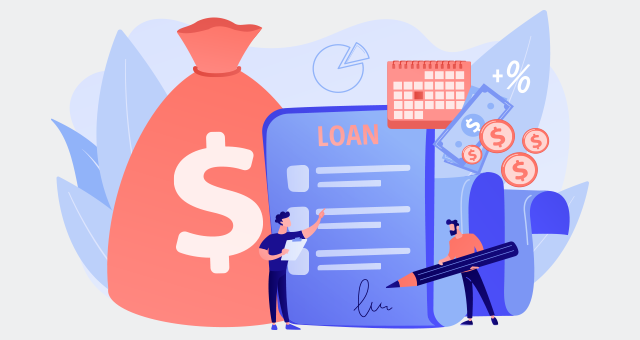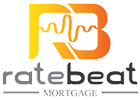
An Option for Rising Mortgage Rates: Temporary Interest Rate Buydowns
Mortgage interest rates are at a two-decade high, and with the Federal Reserve expected to raise the rates twice again this year, homeownership is becoming unaffordable. Home sales are also slowing down. Many sellers have had to wait weeks and, in some cases, months for their properties to sell. In these conditions, a well-known home-selling strategy is making its comeback. It is known as a temporary mortgage interest buydown which was popular in the 1970s and 1980s when interest rates were skyrocketing. Here we will discuss what it is and how it assists buyers to get into their dream homes and sellers get their properties sold.
What is a Temporary Mortgage Interest Buydown?
A Temporary mortgage interest buydown is a creative financing option for fixed-rate mortgages that lower interest rates and monthly payments for a set period before returning to the regular, permanent/fixed rate for the remainder of the term.
These lower monthly payments are covered by an upfront cost, with the necessary funds set aside in an escrow account (usually by the seller). The borrower makes a lower monthly payment during the temporary buydown period and the difference is covered by funds released from the escrow account. This makes monthly mortgage payments more manageable at the start of the mortgage loan term.
Types of Temporary Buydown Mortgages
There are several temporary buydown mortgage options out there. However, the three common types are:
1. 1-0 Buydown
A 1-0 buydown reduces your mortgage interest rate by 1% interest in the first year. For example, if your interest on a 30-year fixed-rate mortgage is 6.5%, you would pay an interest rate of 5.5% for the first year, and after that, the interest rate will revert to 6.5% for the remainder of the mortgage term.
2. 2-1 Buydown
This is the most popular financing option. The buyer’s monthly interest payment will be 2% less than the fixed rate for the first year. In the second year, the interest rate will be 1% lower, and when the third year begins, the permanent fixed-rate interest goes into effect and remains in effect for the remainder of the mortgage term.
3. 3-2-1 BuyDown
The 3-2-1 buydown is good for three years. The mortgage interest rate is reduced by 3% in the first year, 2% in the second year, and 1% in the third year. Your interest rate will then return to the permanent fixed-rate interest rate over the life of the mortgage term.
Check Out The Savings!
Let us take a look at an example to see how much money you could save:
Assume you use a 2-1 buydown on a $250,000, 30-year fixed loan with a 7 %fixed interest rate.
- Your monthly mortgage payment (including interest) is $1,663.46.
- At a 5 % interest rate, your monthly payment is $1,342.05 during the first year of your loan (a savings of $3,856.92)
- In year two, your interest payments rise to 6%, and the monthly mortgage payment increases to $1,498.88 (a saving of $1,974.96).
- Finally, in the third year, the interest rate is fixed at 7% a payment of $1,663.46
- Over the first two years, you will save a total of $5,832.88!
How Sellers Can Benefit
- A buydown is a beneficial alternative for sellers to reduce or eliminate price reductions without lowering the list price of the home.
- It can help move property that has been on the market for a long time as it will entice buyers who would not have considered buying before to reconsider.
- The costs incurred may be tax deductible.
- The property becomes available and attractive to a larger group of homebuyers, especially in a high-interest rate environment.
How Home Buyers Can Benefit
- Borrowers can save money upfront and a lower interest rate will result in lower monthly payments.
- Generates monthly savings, allowing the borrower to settle into their new home and assist with costs associated with homeownership, such as furniture, moving expenses, and emergency repairs.
- It allows them to ease into their mortgage, which is especially important in a rising mortgage interest-rate environment.
- It is a great way to put any extra seller concessions to use. Any unused funds will be applied to the loan principal.
Are There Any Restrictions On Temporary Buydowns?
- Temporary buydown periods are typically limited to three years to prevent home prices from becoming overly inflated. As a result, the buydown scenarios listed above are likely to be the only ones available.
- Furthermore, the annual increase in mortgage rates is generally limited to 1%, most likely to avoid payment shock.
- They are also restricted to specific property types, such as primary or secondary residences, with investment properties frequently barred.
- Borrowers must typically qualify for the standard interest rate of the zero-point loan unless they are expected to see a significant increase in future income (for certain loan types).
- A Temporary buydown can be combined with an FHA loan, a VA loan, or a conforming mortgage backed by Fannie Mae or Freddie Mac.
- Adjustable-rate mortgages (ARMs) are generally only eligible for plans with at least a three-year initial interest rate period.
- The buydown funds are also non-refundable unless the mortgage is paid in full in advance, as with a refinance or home sale. If this occurs, the proceeds are used to pay off the mortgage or returned to the borrower.
Wrap Up
Consider whether a temporary interest rate buydown makes sense for your unique situation now that you understand how it works. Our experts at Ratebeat mortgage are always happy to go over all aspects of the mortgage process with you and compare various loan programs to help you find the best one. For more information, contact us right away.


